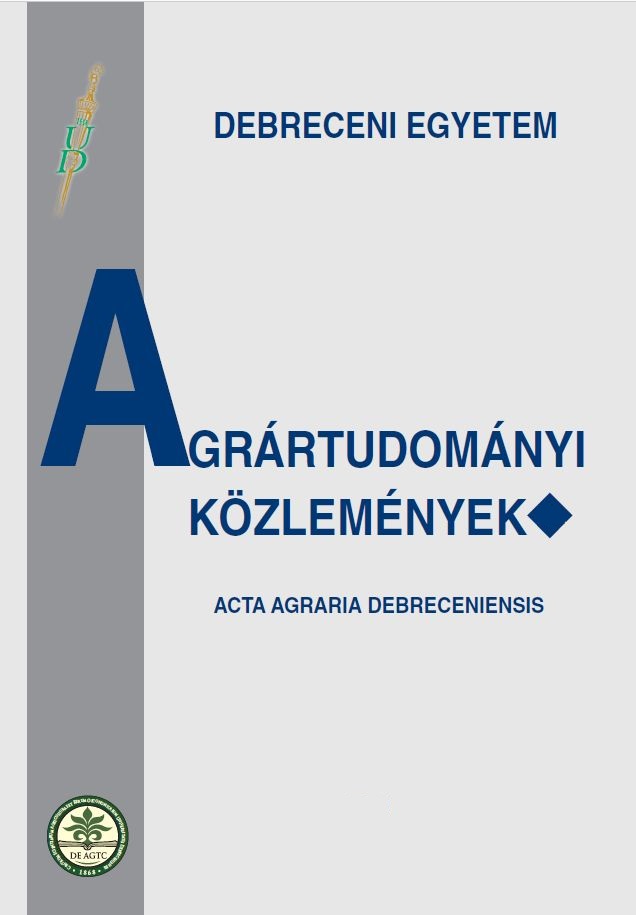Nitrogen Content of Hungarian Soils and Nitrogen Fertilization
Author
View
How To Cite
Abstract
For crop production and agricultural production, the most important natural resource is the soil that can optionally renew. Paralelly with this, soil plays a major role in the geological and biological cycle of elements. As a result of the big (geological) and small (biological) element cycles, the elements and combines neccessary for organisms can accumulate in the soil creating suitable living conditions for plants and other organisms. Soil is a heterogenous system both horizontally and vertically, and soil constituents show great variety in all the three dimensions, in addition, most of the parameters can also change between two examination dates. When talking about the factors influencing plant production, one should take into account this variation and heterogenity in time and space. When making fertilization recommendations, these factors should all be considered. In any consultation system, most of the mistakes and errors made are due to the unsatisfying soil testing and the negligence of soil heterogenity. In the practice of fertilization the biggest mistake is the improper soil sampling, then comes the methodical mistake of soil testing, which is followed by the inaccuracy of instrumental analysis and the subjectivity of result evaluation, but the latter two are negligible compared to the others. Under normal, i.e. production conditions, the quantity and distribution of nutrients in the soil are greatly dependent upon the applied technology, the amount and form of the applied natural and artificial fertilizers and the quality of fertilization.
Fertilization recommendations are needed because in the layer which is accessible for plant roots only a part of the nutrient content is available for plants in a specific production cycle. An illustration of this is that though the upper 1 m layer of an average chernozem soil contains more than 5000 kg N, 12000 kg K2O and 1500 kg P2O5 (form of expression mostly used in Hungary), the application of fertilizer doses which are just fractions of these quantities is essential. This is due to the fact that the available amount of the total nutrient content depends from the quality of soil, the environmental factors (the physical and chemical qualities of the soil) and the specific nutrient’s qualities (solubility, adsorption). Knowledge of these processes and the examination of the factors influencing the actual nutrient content are vital for working out a fertilization practice, which does not put more strain on the environment than neccessary.
All of the above mentioned should be considered when applying inputs in the fields. In a well-functioning practice that considers the economic and environmental conditions (unfortunately the present production and economic conditions do not enable an appropriate level and degree), three nutrients are supplemented generally (and were supplemented in the last decades): nitrogen, phosphorus, potassium.
Studying the nutrient balance of the Hungarian field production’s last hundred years, we can draw some interesting conclusions.
The nutrient balance became positive for nitrogen and potassium in the second half of the 1960’s, while for phosphorus it was positive from the first half of the 1960’s and this period lasted until the end of the 1980’s.
Neither before the 1960’s, nor since the 1990’s has the amount of nutrients supplemented in a specific year reached the amount of the nutrient uptake of the same year.

 https://doi.org/10.34101/actaagrar/9/3562
https://doi.org/10.34101/actaagrar/9/3562